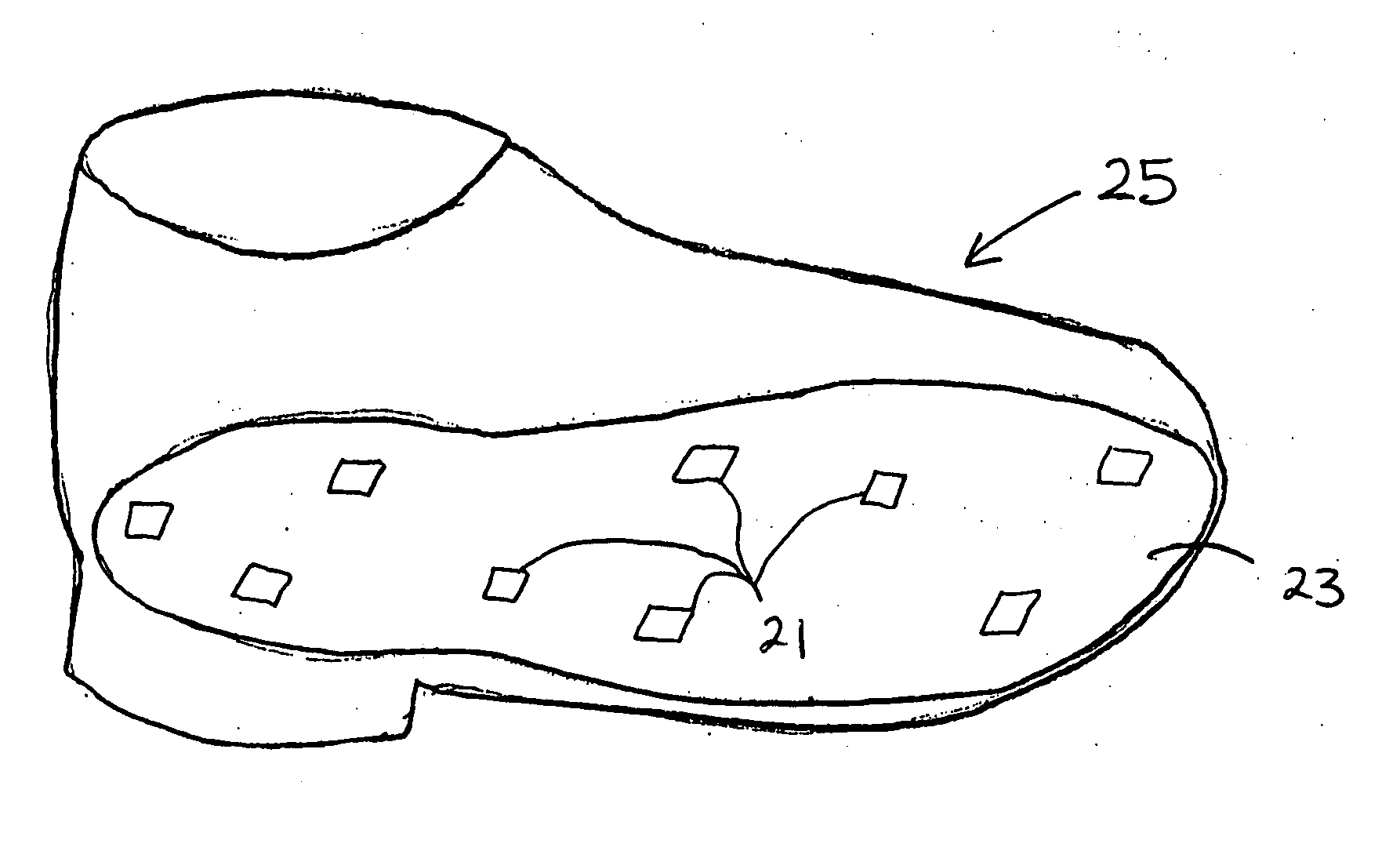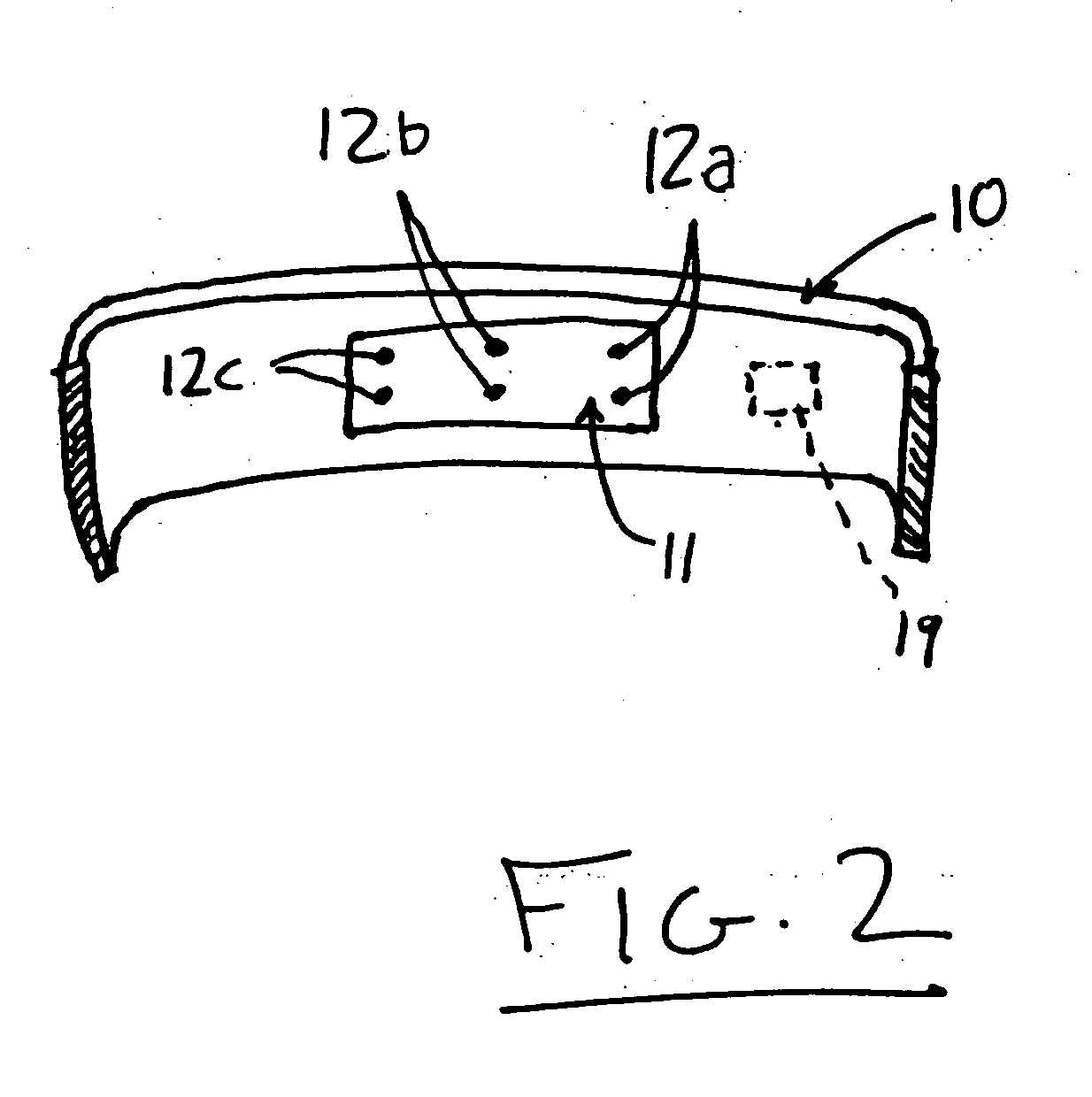Implantable medical device for restoration of neurological function impaired by peripheral neuropathy
a peripheral neuropathy and medical device technology, applied in the field of peripheral neuropathy disorders, can solve the problems of increasing the risk of falling and developing ulcerations during walking, the loss of nerve fibers which is usually irreversible, and the general aging population, so as to reduce the likelihood of falling and fracture, prevent the formation of ulcerations on the foot, and reduce the risk
- Summary
- Abstract
- Description
- Claims
- Application Information
AI Technical Summary
Benefits of technology
Problems solved by technology
Method used
Image
Examples
Embodiment Construction
[0021]FIG. 1 is a perspective view of a therapeutic device in the form of a cuff 10 worn on the leg of a patient for treating balance or gait disorders as well as reduction of risk of ulcerations, falls, and fractures. The cuff or similar worn article may be in the form of a conforming, comfortable elastic band of suitable durability and compatibility with the skin of the wearer. While the preferred location for wearing the cuff is the leg, other places are also contemplated, such as the arm or wrist (bracelet), neck, sole of the foot, ankle, and so forth.
[0022]FIG. 2 is a cross-sectional cut-away view of cuff 10, showing a contact pad 11 on an interior surface of the cuff intended to make contact with the skin of the patient when the cuff is worn. Contact pad 11 has a set of six stimulators grouped in pairs 12a, 12b and 12c that are disposed respectively in anterior, central and posterior portions of the contact pad. It will be appreciated that the number, grouping and location of...
PUM
 Login to View More
Login to View More Abstract
Description
Claims
Application Information
 Login to View More
Login to View More - R&D
- Intellectual Property
- Life Sciences
- Materials
- Tech Scout
- Unparalleled Data Quality
- Higher Quality Content
- 60% Fewer Hallucinations
Browse by: Latest US Patents, China's latest patents, Technical Efficacy Thesaurus, Application Domain, Technology Topic, Popular Technical Reports.
© 2025 PatSnap. All rights reserved.Legal|Privacy policy|Modern Slavery Act Transparency Statement|Sitemap|About US| Contact US: help@patsnap.com



